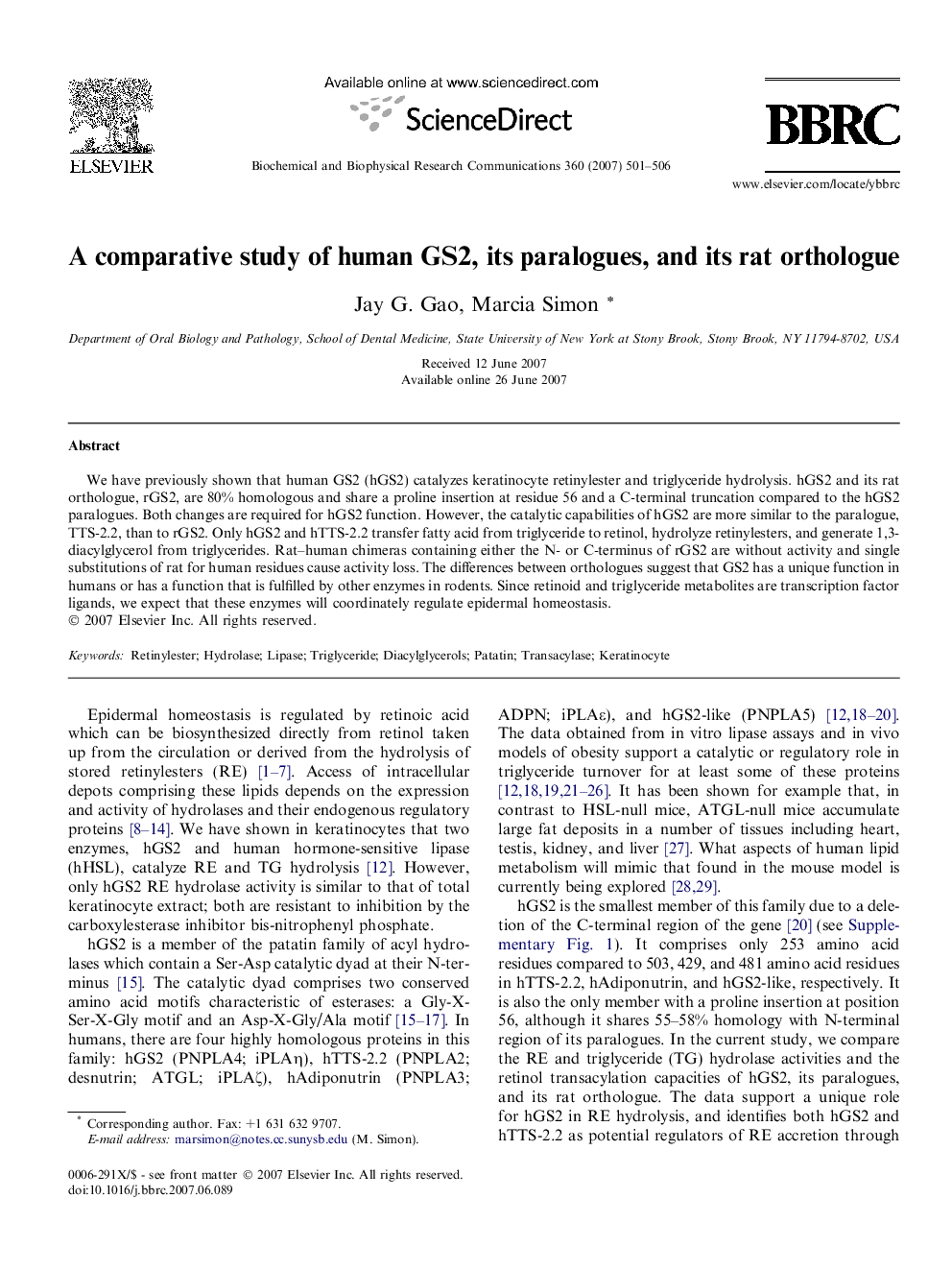| Article ID | Journal | Published Year | Pages | File Type |
|---|---|---|---|---|
| 1937315 | Biochemical and Biophysical Research Communications | 2007 | 6 Pages |
We have previously shown that human GS2 (hGS2) catalyzes keratinocyte retinylester and triglyceride hydrolysis. hGS2 and its rat orthologue, rGS2, are 80% homologous and share a proline insertion at residue 56 and a C-terminal truncation compared to the hGS2 paralogues. Both changes are required for hGS2 function. However, the catalytic capabilities of hGS2 are more similar to the paralogue, TTS-2.2, than to rGS2. Only hGS2 and hTTS-2.2 transfer fatty acid from triglyceride to retinol, hydrolyze retinylesters, and generate 1,3-diacylglycerol from triglycerides. Rat–human chimeras containing either the N- or C-terminus of rGS2 are without activity and single substitutions of rat for human residues cause activity loss. The differences between orthologues suggest that GS2 has a unique function in humans or has a function that is fulfilled by other enzymes in rodents. Since retinoid and triglyceride metabolites are transcription factor ligands, we expect that these enzymes will coordinately regulate epidermal homeostasis.
